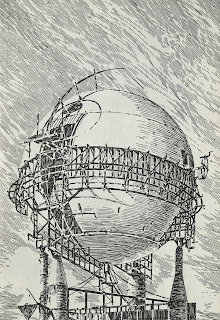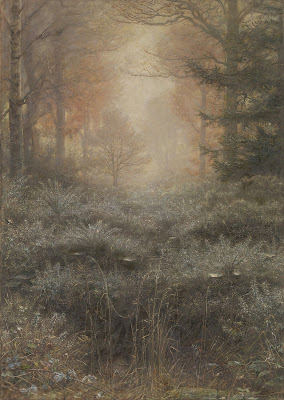 |
| The Connoisseur by Henry Herbert La Thangue 1887 |
An artist’s brushwork is a fascinating personal marker to collectors of traditional paintings. The size and character of the brush strokes, create an underlying pattern in a painting which is interesting to see up close. As an architect and self-taught illustrator, this was not something I had considered until it was pointed out to me by I.M. Pei.
Following are examples from traditional painting that show unification via texture and brush strokes (click on image for enlargement).
Dew-Drenched Furze by John Everett Millais has a rather obsessive texture which is appropriate in depicting vegetation. The fairly narrow value range is suggestive of wallpaper. And yet, I find it mesmerizing.
Autumn Afternoon by Frederick McCubbin is an impressionist sketch that uses the rough brush strokes as a baseline. I don’t think that the painting would have been as successful if any element had been detailed and finished.
Many of the artists from the turn of the century (that is, last century) were focused on treating the surface of the painting as an artistic thing itself. Creating a recognizable image while highlighting the blobs of paint produces an enjoyable tension in the viewer’s mind. Surf and Rocks by Frederick Childe Hassam (1906) is a clear example of that approach.
The simple use of rough painting surface can give a certain unity on its own. The canvas tooth of Summer Sunshine by Gyula Agghazy shows this. The fabric grid is hard to see, but it permeates the entire image.
Most of these examples are of limited use to architectural illustration because a client wants to see in detail what he is buying with his millions. Even so, a good renderer can choose a media or support paper that allows both detail and texture.
 |
| Opus Headquarters by D.E. Jamieson 1999 |
 |
| Canary Wharf by Steve Oles 1985 |
 |
| Aeon - The Architecture of Time pg. 4 by L. Woods 1982 |
Still, it is a lesson that I gratefully learned.








